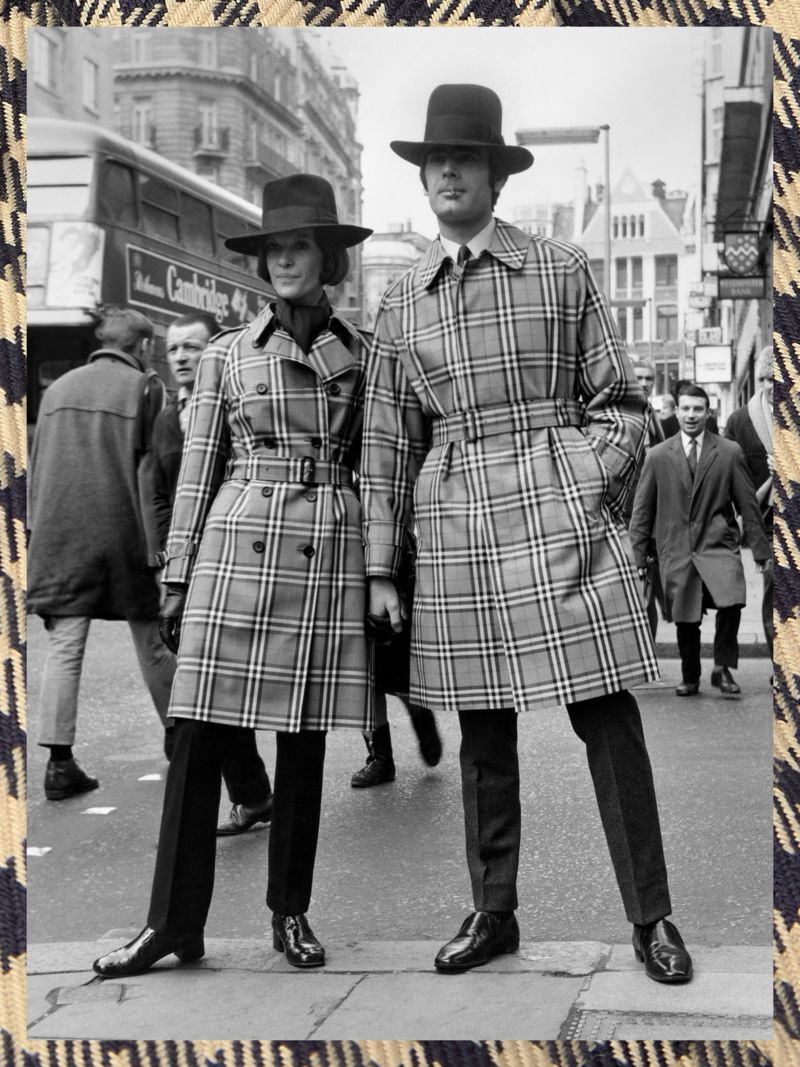THE JOURNAL

With autumn now in full swing, our wardrobes have decisively transitioned into cold-months mode, with big coats and even bigger knits taking centre stage. This change in season has also paved the way for the strong return of heritage checked fabrics, as seen throughout the autumn/winter 2025 collections. These much-loved traditional cloths are full of character, pattern and colour. Their resurgence into the mainstream has helped usher the departure of the era of quiet luxury, which was defined by flat, understated fabrics in rich, subdued tones. For those who like clothes that have substance and charm, this should be welcome news.
The trend of heritage fabrics in modern menswear has a rich history. “It starts in the 19th century with tweed, especially ‘estate tweeds’, which were woven for particular aristocrats and their staff to wear on country estates – as an extension of a coat of arms, if you like,” says Aleks Cvetkovic, a creative strategist and contributing editor to the Financial Times HTSI. These tweeds would blend an array of yarns that would criss-cross and zigzag over each other to create depth and intrigue in a recognisable fashion.

“Everyone who lived and worked on that estate would wear the same check,” Cvetkovic says. “Traditionally, they were designed to blend into the rural landscape. As society morphed in the late 19th and early 20th century and checks started to be worn in both the country and the city, a more urban palette of greys, browns and charcoals emerged.”
From punchy glen plaids – better known as Prince of Wales checks, thanks to being popularised by Edward VIII – and bold windowpane patterns to subtle ginghams and rugged herringbones, some of our favourite designers embraced these classic fabrics and breathed new life into them. SAINT LAURENT augmented sharply structured tailoring with bold tartans, while ZEGNA leaned into relaxed silhouettes with slightly more subtle checks. Meanwhile, brands such as Burberry (it goes without saying, but more on this later), Our Legacy and LOEWE gave traditional fabrics a contemporary spin, offering modern cuts that truly caught our eye.

Models wearing Westpoint (left) and Rider cotton coats on show at a preview of Burberry’s 1970 autumn collection in London, 6 March 1970. Photograph by Harry Todd/Stringer/Getty Images
“Checks have always provided men with an accessible introduction to wearing pattern,” says Mitchell Belk, stylist and fashion director of Port Magazine. He adds that “their association with heritage gives an acceptable authorisation to be quite brave and sometimes garish with colour choice”.
Checks do indeed give you the option of going bold, which can be incredibly fun. Valentino Garavani is in on the action with its gingham cloth, raglan-sleeve overcoat and its Prince of Wales checked wool suit, which has an exaggerated pattern and peak lapels. Both are certified showstoppers. Although you’re not short of more subdued options from other names. Brioni offers a brown flannel suit with a subtle windowpane overcheck that’s incredibly wearable. Similarly, A Kind of Guise, Thom Browne and Our Legacy all have checked overcoats that are slightly more low-key, with rustic and neutral hues that speak to this charming sense of heritage.
“There’s a long-standing association between checks and traditional masculinity,” Belk says. “Think cowboy shirts, lumberjack shirts, Prince of Wales check suits, tartan armies, and so on. If it was good enough for our male ancestors, it’s good enough for us.”

Belk also points out that heritage checks aren’t limited to outerwear and tailoring. Indeed, some of the most traditional and recognisable heritage checked garments were popularised by the labour industry in North America, with our favourite being the lumberjack shirt.
For that, we owe some thanks to the Irish and Scottish migrants who introduced these heritage cloths to the US in the 18th century, and they gradually became part of everyday clothing within the labour force. This was due to how dense and warm woollen flannel is and how the busy pattern not only disguised signs of wear but was simple to repair.
Today, these fabrics are associated with a rugged sense of masculinity, despite the luxurious and fine nature that many garments behold such as God’s True Cashmere, The Elder Statesman, TOM FORD and more.
“I absolutely love the Drake’s X HIM flannel shirt,” Belk says. “I feel you may as well go bold if you want to fully embrace it. The richness of the colour combined with the cotton flannel material is certainly one for the winter season.” (Furthermore, 100 per cent of profits from the sales of this special collaboration until 20 November will be donated to Movember as part of MR PORTER Health In Mind’s aim to support men’s mental and physical health.)

Dirk Benedict as Templeton “Face” Peck in The A-Team, wearing a quintessential cowboy look, 1983. Photograph by NBC/Getty Images
When it comes to heritage fabrics, few brands are as instantly recognisable as Burberry, thanks to its iconic house check with its distinctive tan base. Originally developed in the 1920s as a cotton lining for the brand’s trench coats, the pattern has since evolved into a global symbol of British style. Over the decades, Burberry has reimagined the check in countless ways – from down-filled puffer jackets and gilets to oversized shirts and a wide array of accessories – ensuring its heritage lives on in a thoroughly modern wardrobe.
Autumn has its merits, but it also has its downsides, most obviously dreary weather that can quite literally dampen your parade. If you’re looking to brighten your mood, checks should be top of the list.
“Everyone loves a big check,” Cvetkovic says. “It’s a code that everyone can understand at any stage of life. A checked overcoat can appeal to really cool thirty-something creative living in east London the same way it can to an older gentleman swanning around Mayfair with his blazer and trousers beneath.”